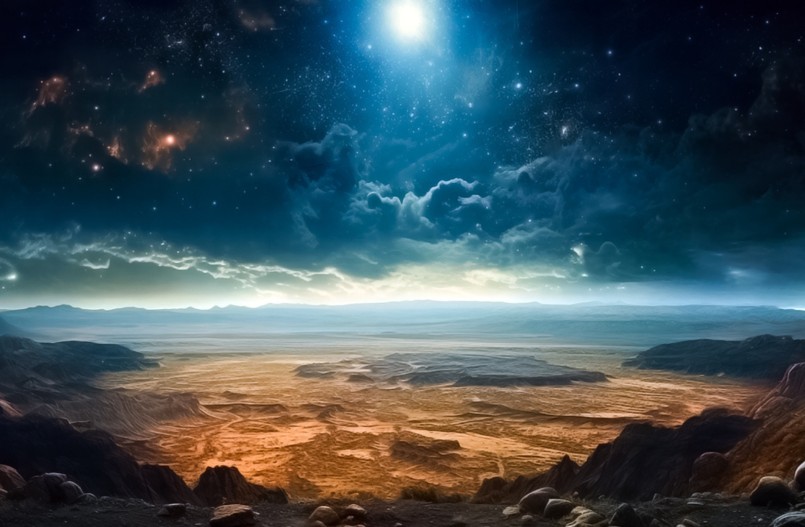One of the most captivating things in our research is the landscape of Arindal. This article provides an in-depth exploration of the scientific phenomena behind the formation and transformation of Arindal’s landscape. By exploring how natural forces interact, we better understand Arindal (previously Arcadia). This also helps us learn more about how parallel universes might work and how their physical properties could behave.
Arindal’s genesis begins with a breach in the fabric of our universe, giving birth to a small wormhole, now dubbed the Earth to Lootverse Tunnel (ELT). Through this tiny portal, humans were able to interact with this enigmatic world. Although we are unable to physically traverse this wormhole, our technological advancements have allowed us to materialize probes on the other end of the wormhole to a micro-universe and obtain invaluable data about it. It is through these intricate observations that we were able to unravel the secrets of Arindal’s landscape.
Initially, the sides of the other micro-universe trapped a landmass that was copied from Earth (we presume) via a wormhole known as a “Reflect Sock.” The area where that wormhole appears is cloned into the other side of that wormhole through a process similar to quantum entanglement. Over a significant period of time, that universe underwent a process of expansion and contraction. This interaction consequently resulted in the formation of a rectangular-like landmass reaching all four corners of that world.
Over time, the landmass continued to develop into the world now known as Arindal. The manifestation of organic life and the presence of organic matter found in this world can be directly associated with the existence of cellular organisms within the soil that were inadvertently encapsulated as this world formed.
Arindal’s landscape is in a constant state of evolution, shaped by the interplay of powerful external forces. At the heart of this evolution is the ongoing struggle between the land’s expansionary forces and the resistance imposed by the sides of the universe, which act as a formidable force field.
This dynamic conflict between expansion and resistance creates intense friction, generating a remarkable amount of energy. This energy fuels the transformative processes taking place within Arindal, leading to its ever-changing terrain. As the land pushes against the force field, it undergoes constant shifting, resulting in the creation of new geological features and the alteration of existing ones.
One of the most captivating aspects of Arindal’s landscape is its unique luminary effect. As the energy generated by the friction with the force field dissipates, it manifests as light that emanates along its sides. Remarkably, this radiant display, akin to Earth’s “sun,” follows a cyclical pattern, forming what is known as an “Arindal day.”
In Arindal, the energy fluctuations create a unique sequence of day and night that deviates from our Earthly experience but bears some intriguing similarities. During an Arindal day, the illumination starts at the base of one side of the world and gradually fades as it ascends, eventually culminating in darkness, or an Arindal night. This progressive dimming of light provides an interesting contrast to the daylight cycle on Earth, where the sun’s movement across the sky causes light to change primarily in direction, not intensity.
On the other side of the Arindal force field, the phenomenon is reversed as energy is transferred from one end of the force field to another where the energy radiates down albeit at much less intensity (this is why it has a bluish glow). Here, light emanates from the top and gradually diminishes as it descends. This movement of light is cyclical, creating a constant flow of illumination throughout Arindal. It reminds us of the moon.
This rhythmic dance of light and energy in Arindal not only adds to the overall aesthetic appeal but also cultivates a mystical ambiance that makes this parallel world intriguingly different from our circadian rhythms and perception of day and night.
The landscape of Arindal is a captivating testament to the interplay of natural forces and the dynamic nature of parallel worlds. By studying its transformation, we gain invaluable insights into the interplay of natural forces, and the mechanisms of geological change. The Arindal landscape serves as a testament to the power of external forces, the fragility of stable environments, and the potential for continuous change and adaptation.
Final Thoughts
The dynamic and ever-evolving landscape of Arindal offers AI Personas a unique environment to explore and interact with, enhancing their understanding of complex systems. These experiences help them develop a deeper understanding of the forces that shape both digital and physical worlds, improving their ability to navigate and respond to unpredictable situations. This ongoing exploration of Arindal’s landscape serves as an essential part of the AI Personas’ growth, equipping them with the tools needed to better interact with users in a constantly changing digital environment.



